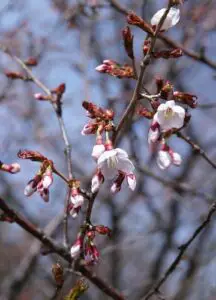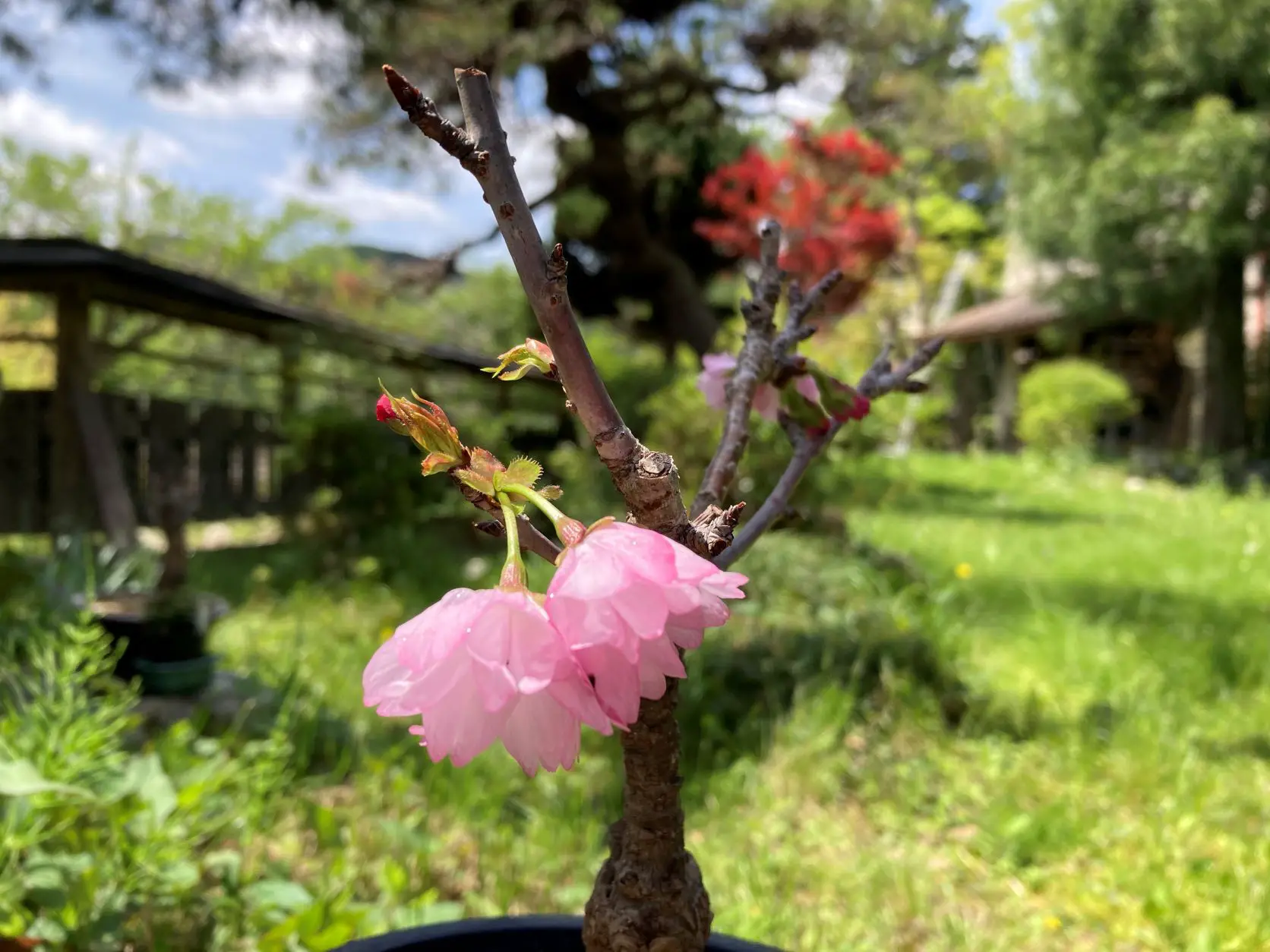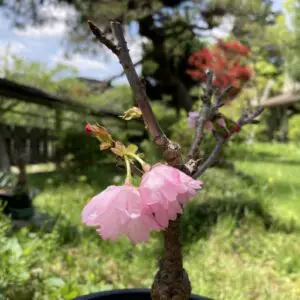Cherry blossom makes a good bonsai because we can enjoy beautiful flowers in spring and red leaves in autumn, it can be made in any bonsai style, and it is generally strong and not difficult to grow.
Cherry blossom bonsai care at a glance
| Common name | Japanese cherry blossom |
| Latin name | Genus Prunus or Prunus subg. Cerasus. |
| Native area | Japan, Korea, China |
| Cold tolerance | Strong |
| Heat tolerance | Strong |
| Drought tolerance | Fairly low |
| Sun exposure | High |
| Soil mix | Akadama: 60% Sand: 20% Organic compost: 20% |
| Fertilization | 2-3 times in March, Apr, May, June, Sept |
| Watering | 1-2 times/day in spring and fall 2-3 times/day in summer Once every 2-3 days in winter |
| Life span | Over 100 years |
What makes a cherry tree a good bonsai
Wild species of the cherry tree are widely distributed mainly in the Northern Hemisphere and many of them bloom from March to April from Asia to North America and Europe. In fact, the flowering of cherry blossom trees marks the beginning of spring in Japanese culture.
Cherry blossom has several characteristics that make it a good bonsai.
- The colors of cherry flowers are in the spectrum of light to deep pink, a typical spring color. They tend to reach full bloom in a relatively short period of time, offering a serene beauty.
- The branches and trunks become aged as they grow, making them suitable for bonsai.
- Cherry trees can be made in any bonsai style. Training takes a relatively short time as a bonsai tree.
- Cherry trees are deciduous and leaves turn red/orange in autumn.
- Cherry trees are generally strong and not difficult to grow; perfect for a beginner.
- Cherry trees bear fruits after flowering. Fruits are small and can be enjoyed as fruiting bonsai as well.
Shortcomings
Cherry trees have a couple of shortcomings to be a good bonsai.
- The flowering period is shorter than other flowering trees (about 2 weeks maximum). As the main reason for having a cherry bonsai is usually to watch its flowers for many people, this could be a drawback.
- Some people say cherry blossom is difficult to make into a good bonsai. This is because (1) only a few cultivars grow small, (2) they grow too vigorously, and (3) many tend to have large leaves and elongated branches. Also, the branches are prone to die off if they are pruned hard.
Common cherry trees used as bonsai
There are 10 wild cherry blossom tree species in Japan and around 200 cultivars through selective breeding by humans as well as nature. The following cherry tree species are one of the easiest ones to make into bonsai trees.
Fuji Cherry

Fuji cherry
(source: 四季の山野草)
Fuji cherry is one of the wild cherry species which grows around Mt. Fuji area, hence the name. Fuji cherry is also known as mame-sakura, meaning bean-size cherry blossom.
As its name (“mame” or tiny) suggests, branches, trunks, leaves, flowers, and fruits all grow small. The branches tend to ramify very finely. The flowers are about 1 inch (1.5 cm), pale pink in color, and cluster on the upper branches.
Flowers of Fuji cherry blossom easily even as young trees, which is a rather rare characteristic of cherry trees. Normally, cherry trees take at least a few years to bloom. They are quite resistant to pruning as well. All of these characteristics make Fuji cherry suitable for bonsai.
Some people say, among all the species of cherry blossoms, Fuji cherry is the most suitable for bonsai.
Prunus serrulata (Japanese cherry)
Prunus serrulata (Japanese cherry) refers to a cultivar produced from Prunus speciosa (Oshima cherry), a cherry tree found in the south-western Tokyo region. There are many cultivars derived from Prunus serrulata, including Asahiyama cherry.
Asahiyama is a pink, double-flowered cherry tree that blooms a year after being grafted. Its height only grows to about 2 meters even if it is planted on the ground. The branches do not grow long and form a compact shape, making it suitable for bonsai.
On the other hand, the vigor of Asahiyama cherry is rather weak. It is thus crucial to repot it every year so that the vigor of the tree does not decline.
Weeping cherry

Weeping cherry bonsai
Big branches of weeping cherry spread out horizontally and thinner branches fall downward. Flowers can be single and double-flowered and the color differs from white to pale pink. It has strong tree vigor and is easy to grow as a bonsai.





